These 14 plants will survive no matter how you plant them. Plant them once and you can enjoy their flowers every year!
In the mid-nineteenth century, British natural garden horticulturists believed that beauty was a sensory experience and advocated the use of vibrant plants to express a natural style that was expansive, real and vivid, resulting in a garden style that is still widely used today - the flower border.
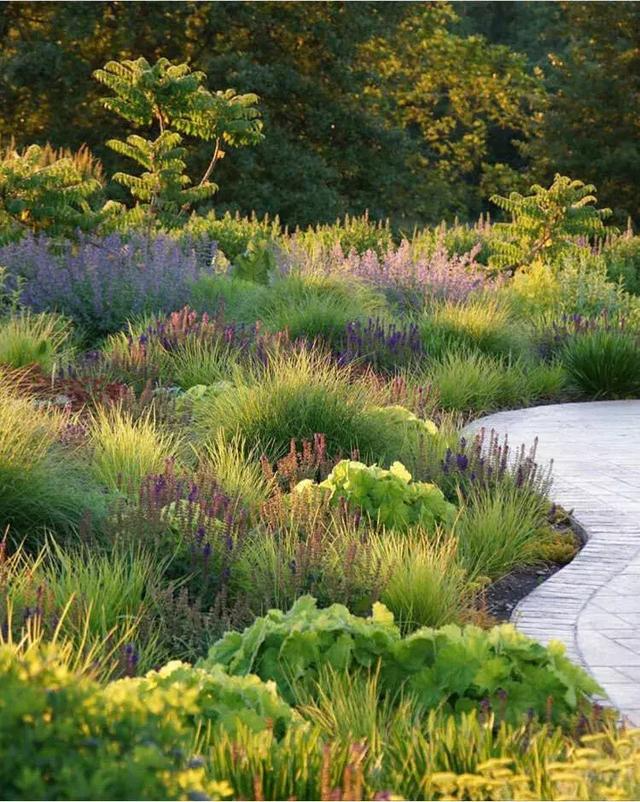

Flower borders have become a common garden landscape on both sides of roads, at the edges of grasslands, by lakes, and in other intersecting areas. They usually use bushes, hedges, low walls, or buildings as backgrounds and use perennial flowers to create strip-shaped flower arrangements that simulate natural conditions.
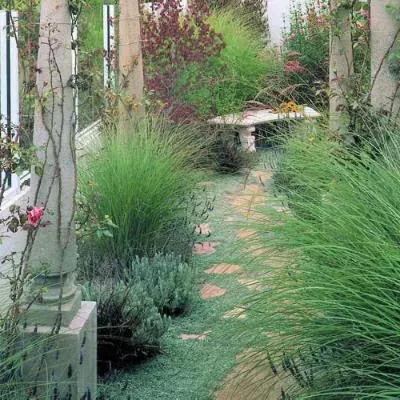
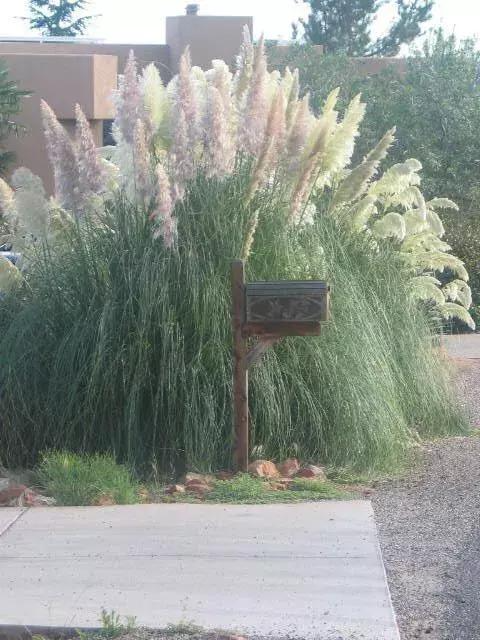
When creating a flower mirror, you need to consider whether the plants can adapt to the local environment, whether it is troublesome to take care of them later, and whether you need to replace the plants every year.
At present, the main methods of creating flower mirrors in China are woody plants, perennial roots, bulbous plants or plants with excellent self-seeding ability, which can save manpower, material resources and financial resources. After all, gardening is to please yourself, not to torture yourself.
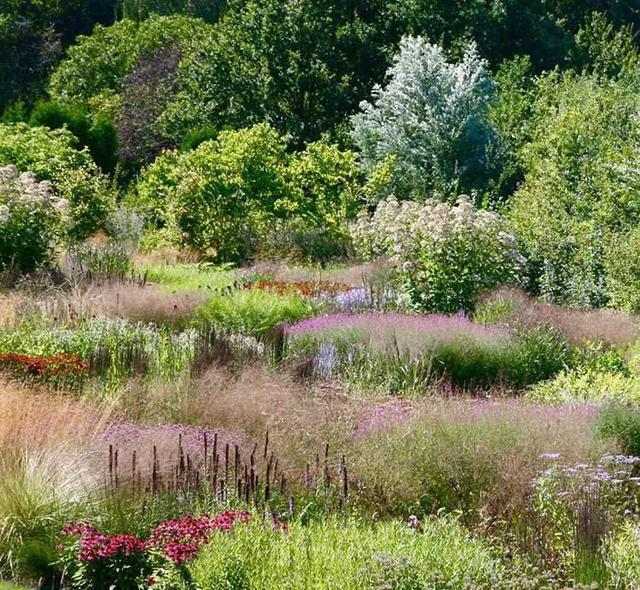
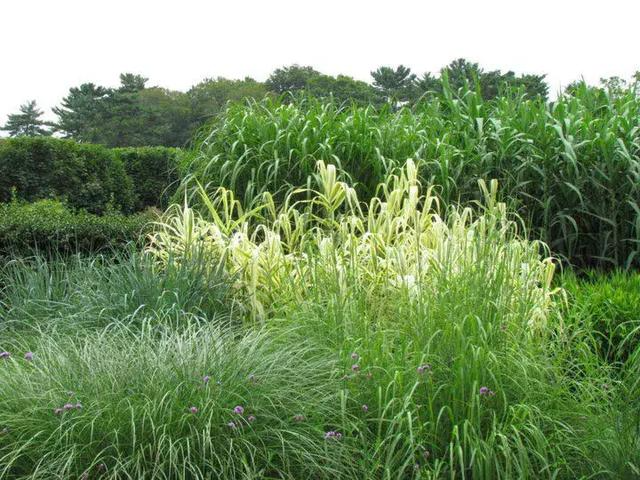
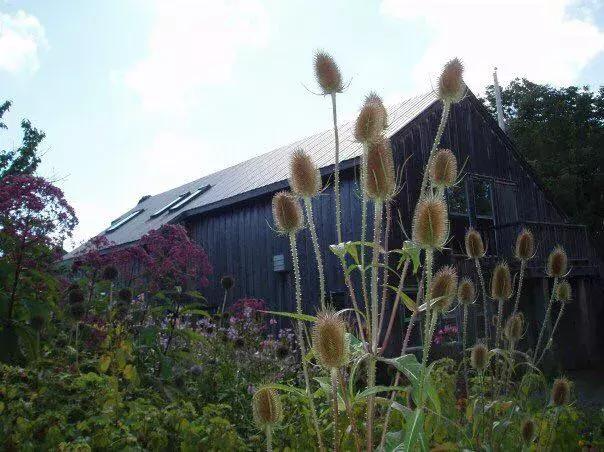
The plants recommended to you this time are popular plants widely used in gardens and flower mirrors.
Of course, if you don’t have land to plant, you can choose potted plants, which have a great ornamental effect.
01
Blue Fescue
Blue fescue is one of the very few blue-purple ornamental plants in nature. Its greatest ornamental feature is its leaves that are strongly curled inward into needle-like or hair-like shapes. From a distance, it looks like a ball of blue hair. It is even more lovely when paired with other plants or rocks.
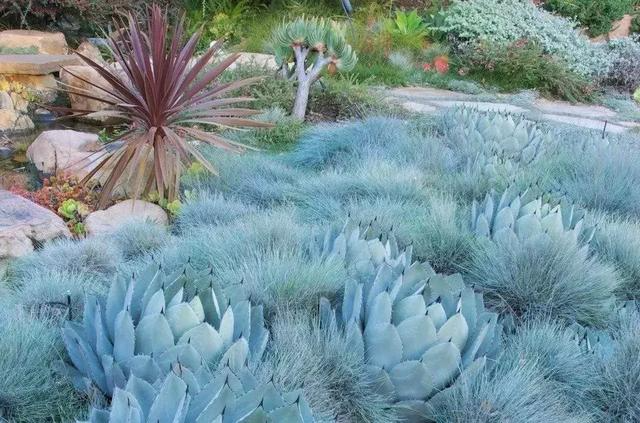
▲ Effect of sheet planting
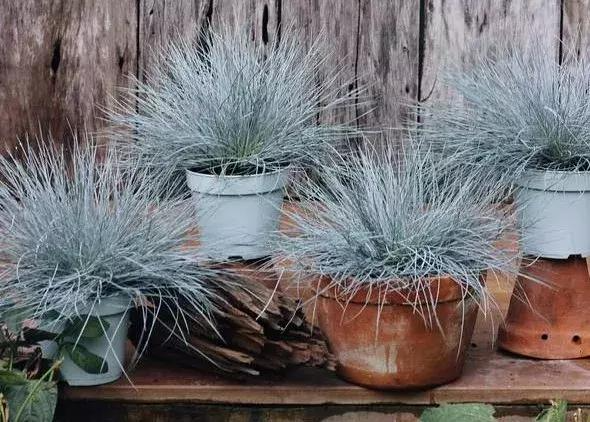
▲ Potted plants viewing
Blue fescue is suitable for flower beds and borders. Its outstanding color can form a sharp contrast with flower beds and borders. It can also be used as a border on both sides of the road. It has a very outstanding effect when planted in pots, in patches or as a border for flower beds.
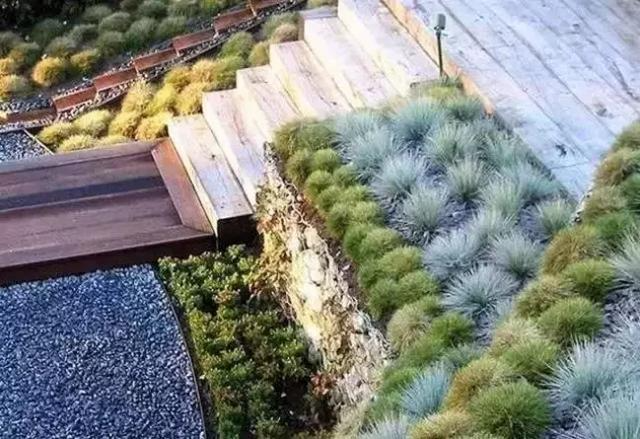
▲ Flower bed matching
Blue fescue grows best in loose neutral or slightly acidic soil and is slightly tolerant to saline and alkali. It grows well in full sun or partial shade, and avoids low-lying waterlogging. It has good cold resistance, and can withstand temperatures as low as -35°C. It is drought tolerant, but should be watered appropriately during prolonged droughts.
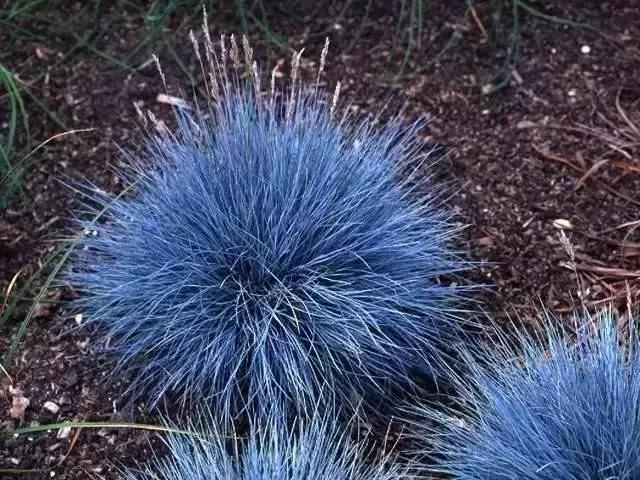
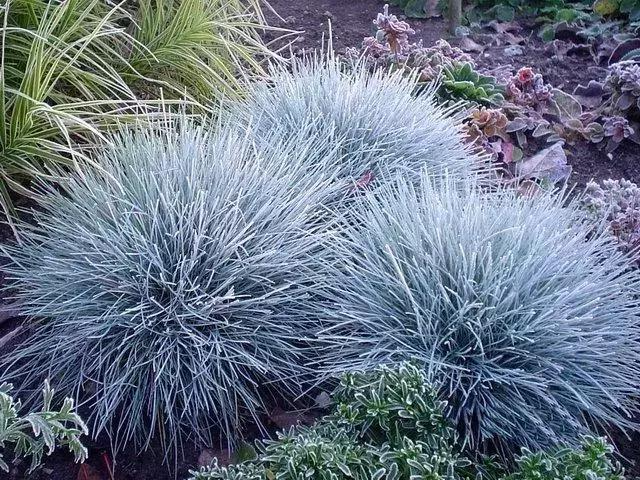
02
sage
Sage is an evergreen small subshrub with a well-developed root system and grows in clusters. It is native to southern Europe and the Mediterranean coastal areas. The leaves are gray-green and the flowers are blue, light blue, purple or gray-white. It likes a warm, humid and sunny environment and is cold-resistant. It is suitable to grow in loose, fertile and well-drained sandy loam.
Sage grows strong and fast, and produces a large number of flowers. It does not require much care and will bloom into a large flower ball. It is a very worry-free and lazy flower.
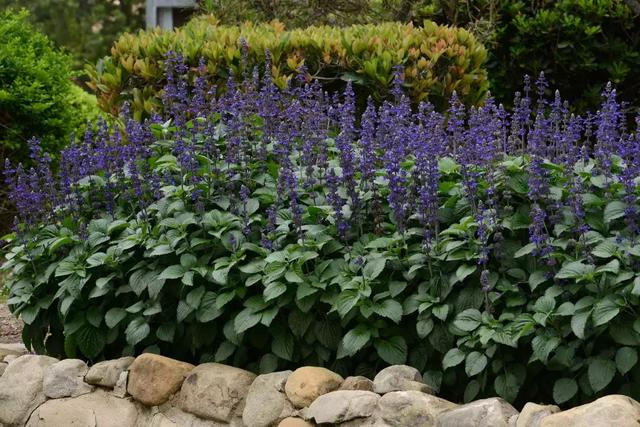
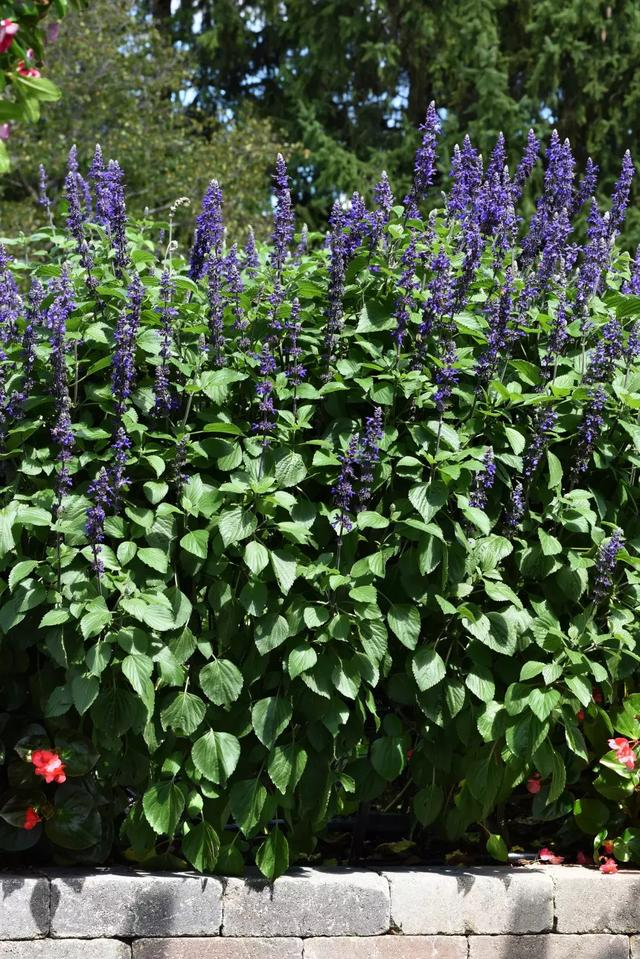
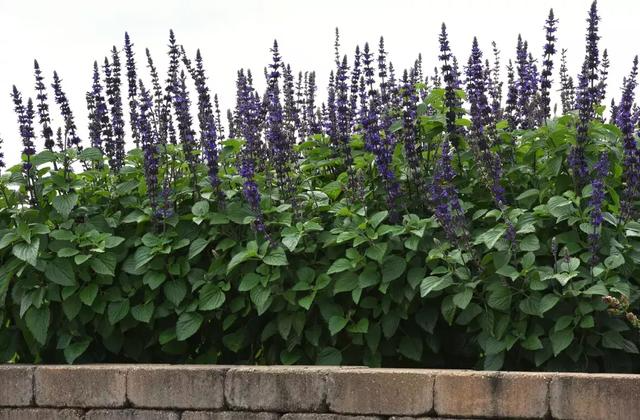
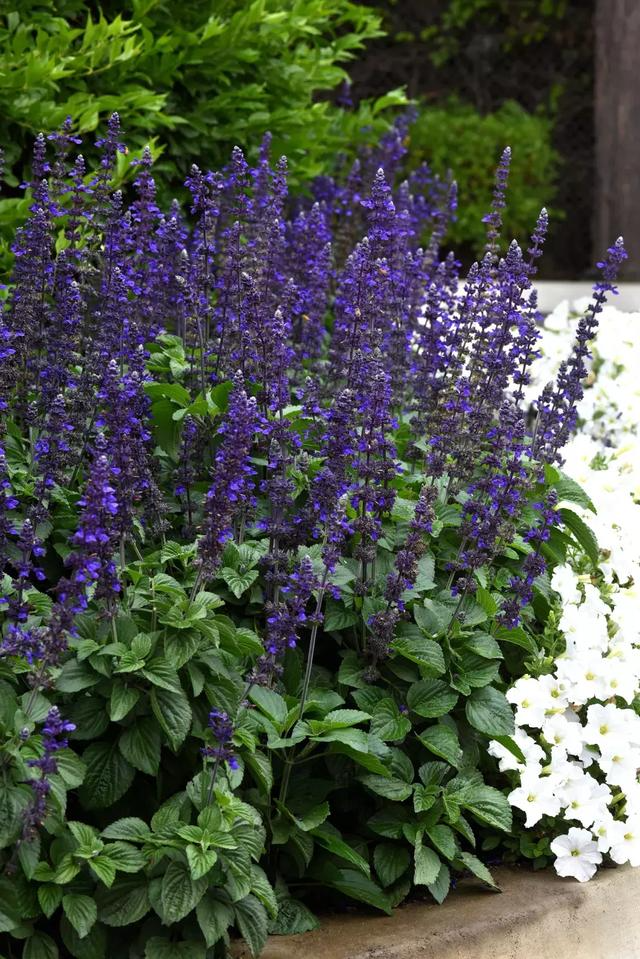
03
Sea dianthus
Sea pink has beautiful flowers and is now cultivated in many parts of the world. It is a perennial herbaceous plant of the family Leucanthemum and the genus Sea Pink, native to Europe and America. The plant is 20∽30 cm tall, clump-shaped, with basal leaves, linear long sword-shaped leaves, pink to rose red flowers, entire, dark green edges; it blooms in spring, with terminal capitula. The petals are dry, and the small flowers gather into dense balls, which can form a very beautiful landscape when planted in groups.
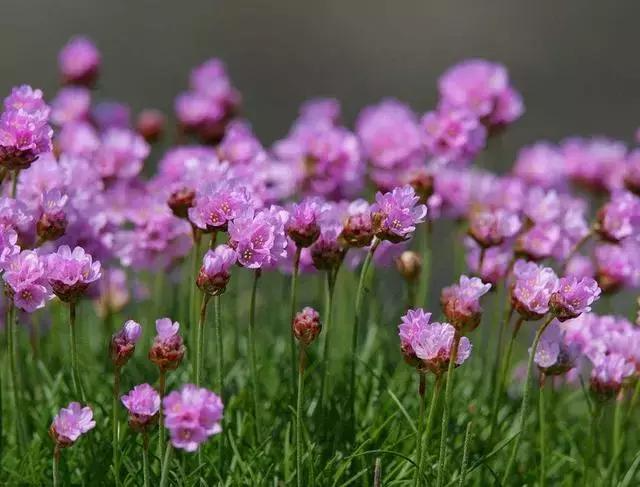
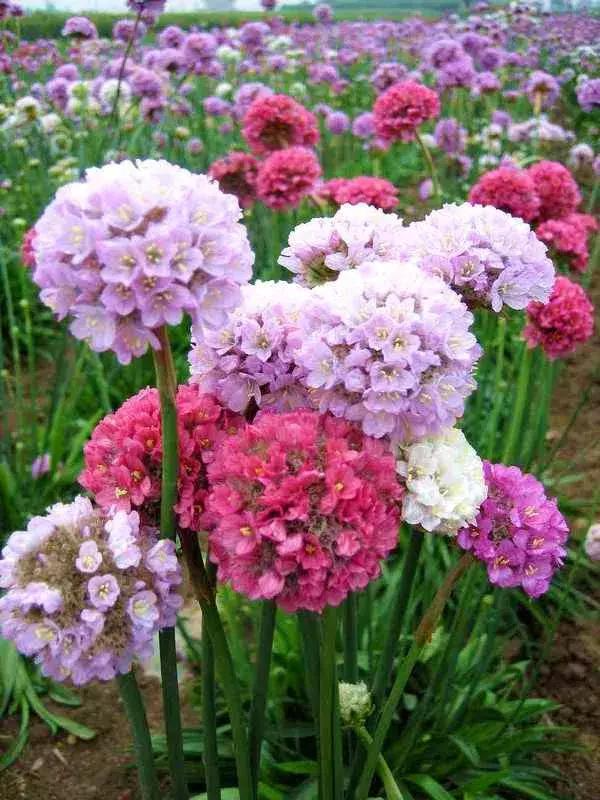
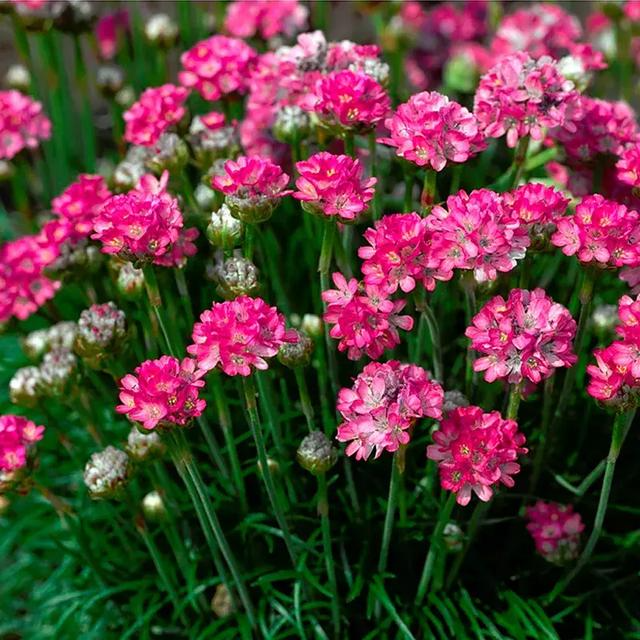
The plant of the sea dianthus is small and compact. During the flowering period, a large number of rose-pink flowers will bloom on the compact plant. This flower is a spring flowering plant. It has a long-lasting and bright flower color, and its dark green grass-like leaves are deeply loved by flower lovers. It is suitable for flower beds, courtyards, potted plants and other places.
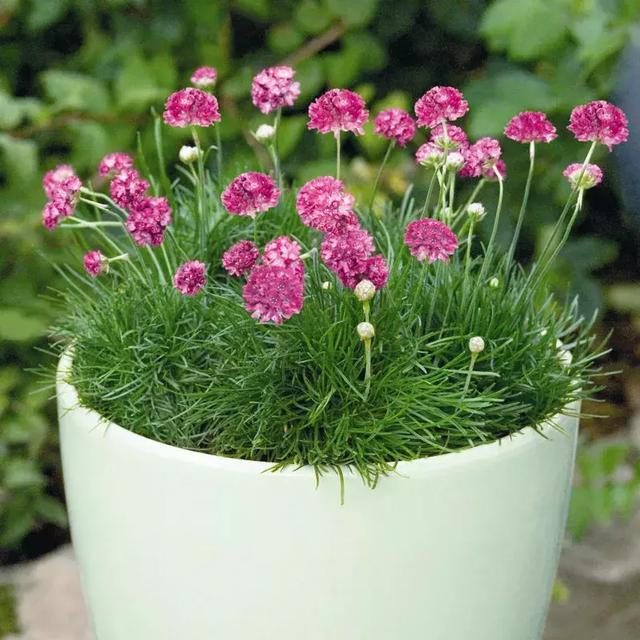

04
Torch Lotus
Torch lily, also known as torch flower, is a perennial flower of the genus Torch lily in the family Liliaceae. The long pedicels are topped with a bunch of orange or yellow flowers, which, as the name suggests, look like small torches swaying in the flowers, creating a unique landscape. Its narrow and thin leaves have the charm of orchid leaves and are similar to mosses in ornamental grasses. Even when not in bloom, the landscape effect is very good, and it is a rare perennial variety for decorating gardens and flower borders.
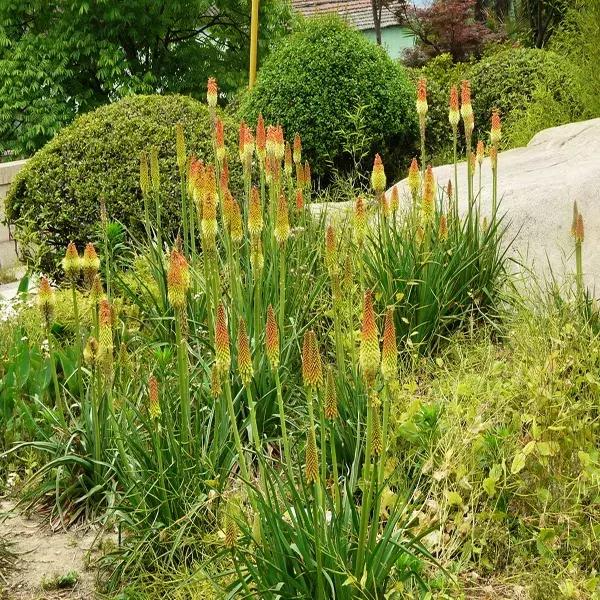
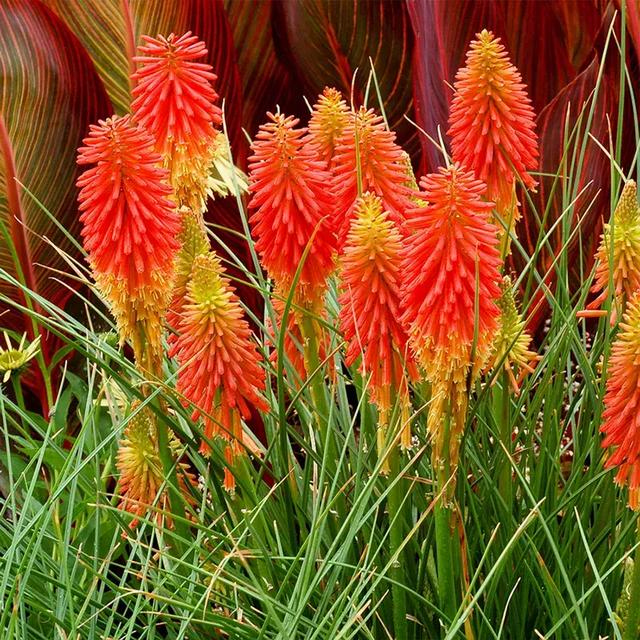
The most common products in China are mainly yellow and orange. The plant height is about 40 cm. During the peak flowering period, the entire flower arrow can grow to 60 cm to 70 cm. It can be planted in clumps on lawns and next to rockery. It is an excellent variety for arranging flower borders, municipal gardens, urban greening and parks.
Torch Lotus can overwinter near the Yangtze River Basin. It requires relatively extensive management in the south, but because it does not like stagnant water, it is best cultivated in sandy soil.
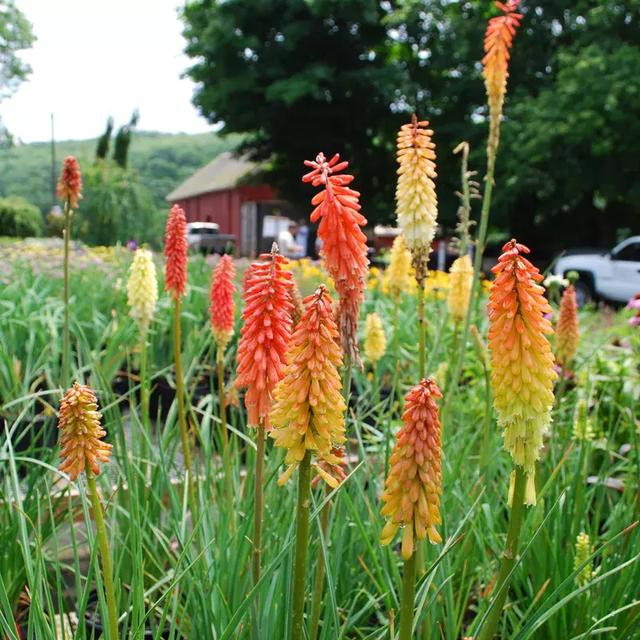
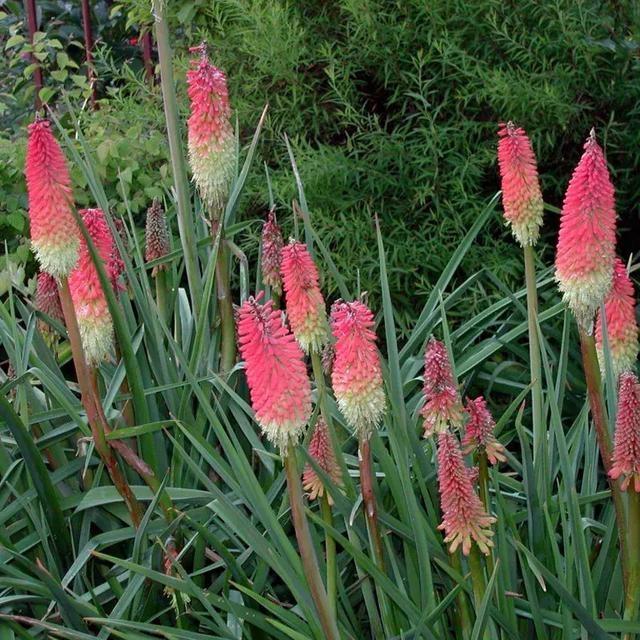
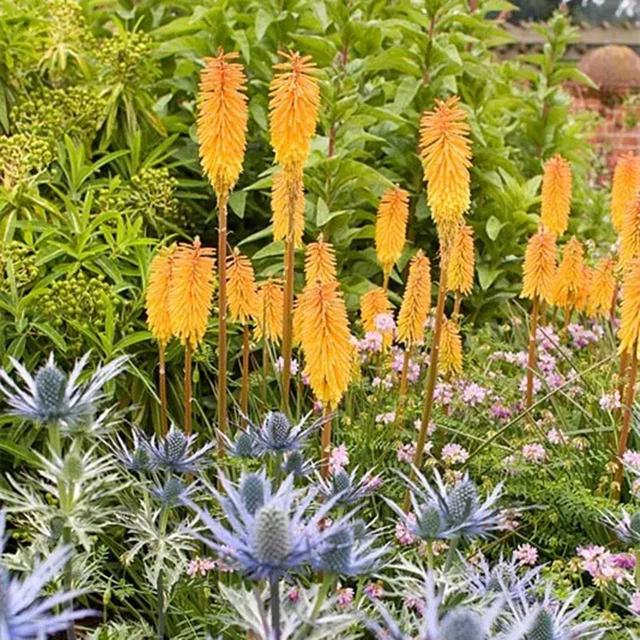
05
Pink muhly grass
Pink muhly grass is a perennial grass from the Great Plains of North America. It is loved by everyone for its cloud-like pink flowers in autumn and its delicate texture. In particular, the landscape effect of large-scale flower fields is more shocking. In recent years, it has become an Internet celebrity plant!
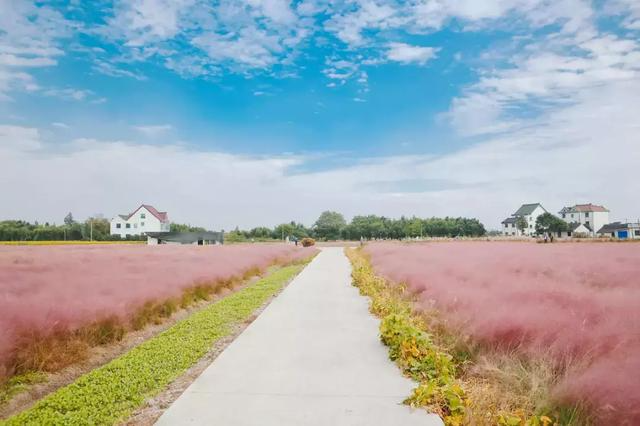
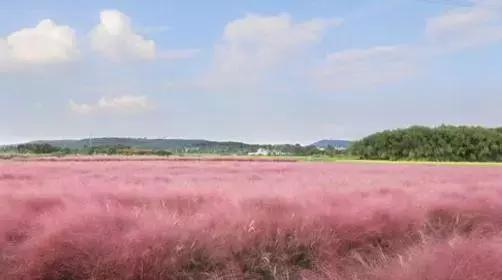
Pink muhly grass is a plant of the Poaceae family. The plants in this family grow very fast and their reproduction mainly relies on tillering and sowing.
From planting to maturity, you basically don’t need to do any management to harvest a sea of pink!
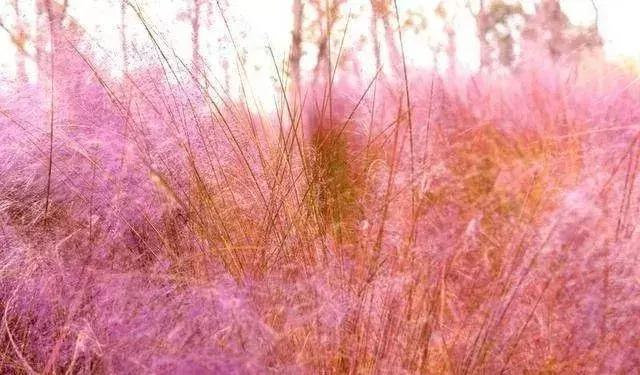
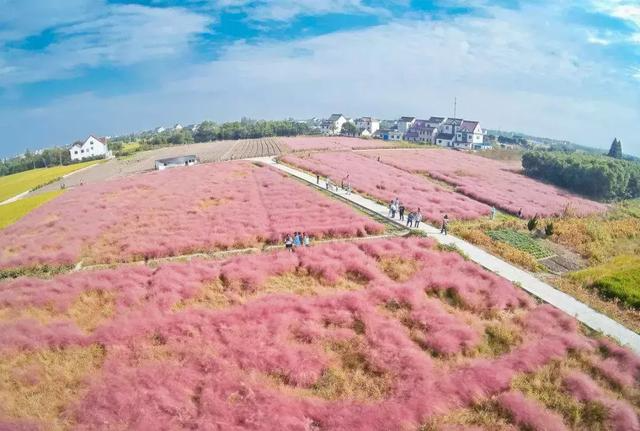
Pink muhly grass is very easy to grow. As long as there is sufficient light and proper watering where you plant it, it can be planted in almost any type of soil. It does not require much water and is very suitable for large-scale planting in the wild.
There is no need to worry about the Northeast region, it can also be planted in the cold northern region. In winter, the above-ground part of the pink muhly grass will freeze to death, and it will grow again the following year, similar to a lawn.
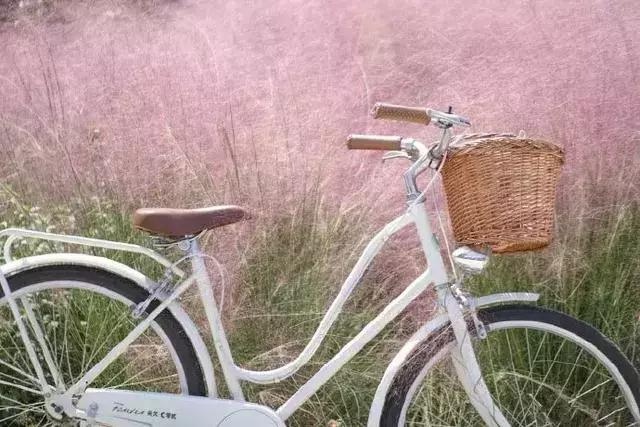
06
Rudbeckia
Rudbeckia is a perennial herb in the Asteraceae family and Rudbeckia genus. Other names include black-eyed chrysanthemum, yellow chrysanthemum, yellow chrysanthemum, false sunflower, etc.
Originally from North America, it is now cultivated in various places. Rudbeckia has a large plant, numerous flowers, a long viewing period, and has double petals and black heart varieties. It can be arranged in parks, schools, courtyards and other places, and can also be used as flower beds and flower border materials. It is also a fine product for cut flowers and vase placement.
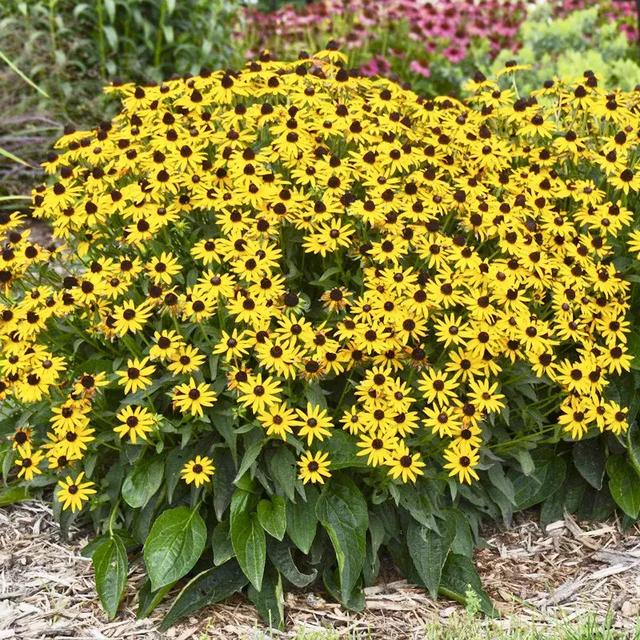
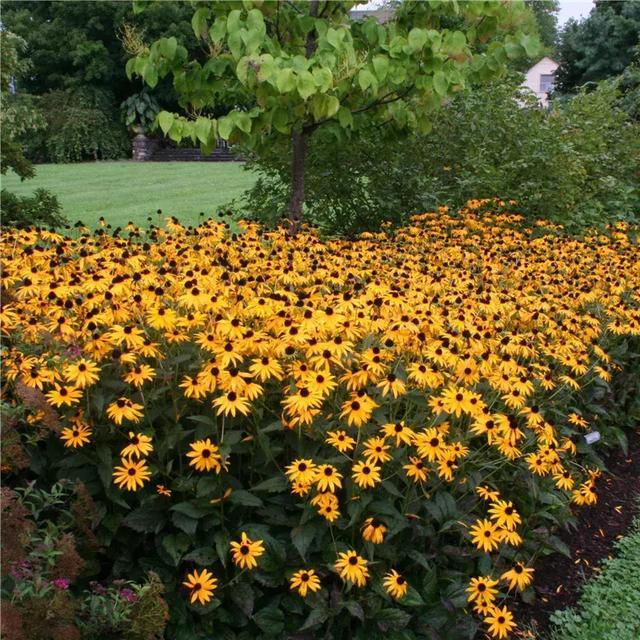
Rudbeckia is a beautiful ornamental plant that is often seen in gardens around the world. It is a relatively easy plant to cultivate because it is not very sensitive to sunlight. Whether it is cultivated in a sunny area or in an environment with weak sunlight, it will not affect the bright effect of the flowers. In addition, its stems are hard and not easy to fall over. It is also disease-resistant and insect-resistant. It is a particularly easy-to-grow plant and is deeply loved by flower lovers!
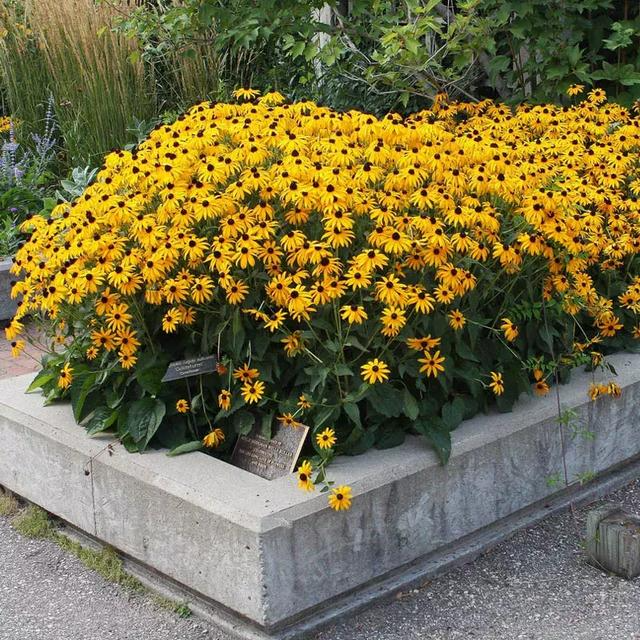
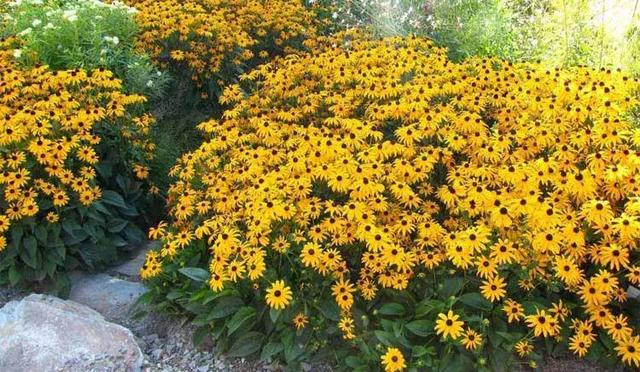
07
Calamagrostis chinensis
The grass likes light and is not selective about soil. It grows vigorously in moist and well-drained soil. It is a favorite forage for livestock. Its roots and stems are tenacious, resistant to saline-alkali soil and strong humidity, and it is a good material for fixing sediment and protecting river banks.
In the courtyard, it is a good ornamental grass. You can appreciate the simple and rough leaves and golden flower spikes with a harvest atmosphere. It has good cold and heat resistance and can be planted all over the country.
The growth rate is extremely fast and the effect can be seen in the same year of planting.
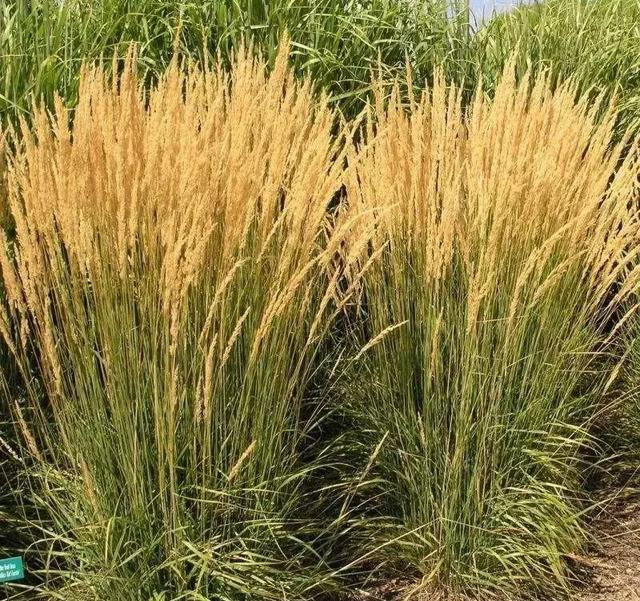
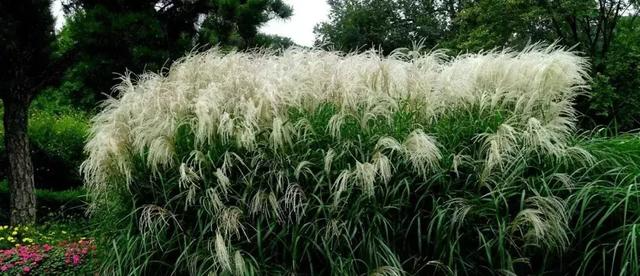
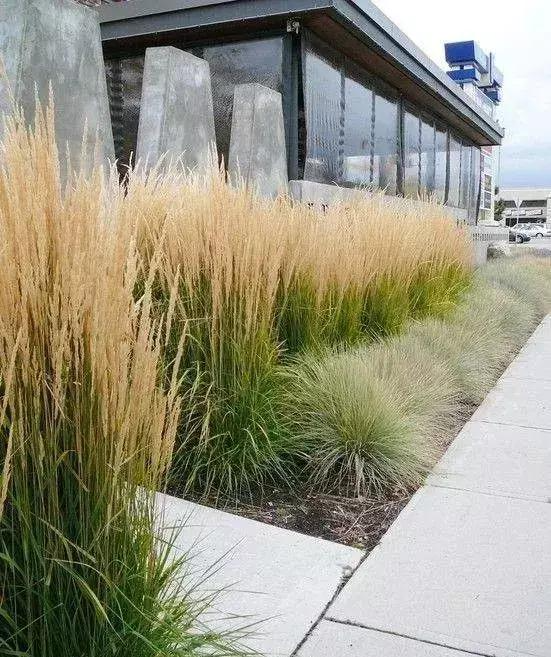
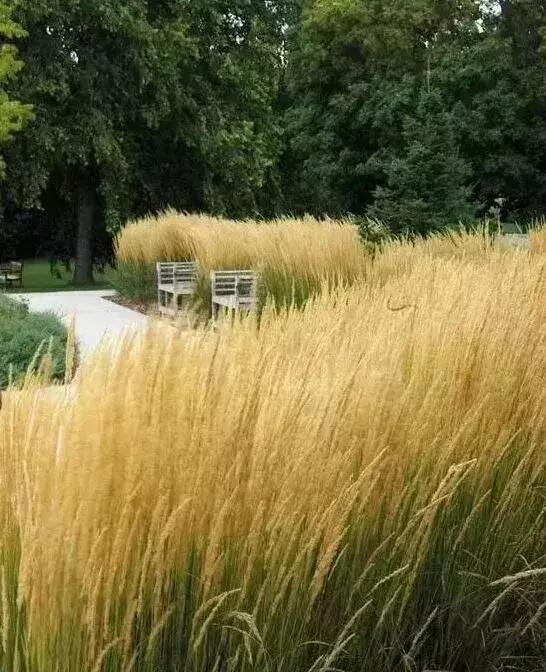
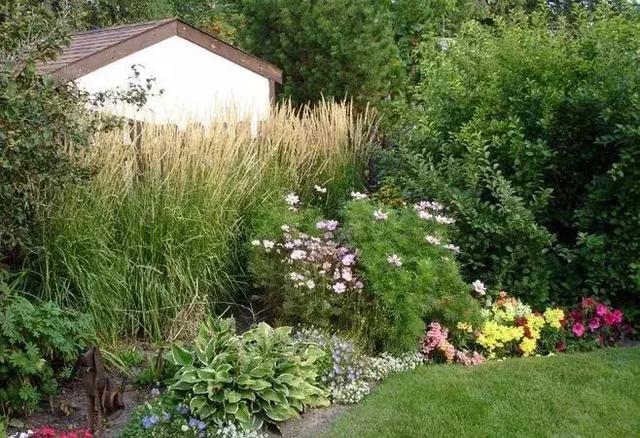

08
American Mint
Mint is a perennial herb of the Lamiaceae family and the genus Mentha. It is native to America and is cultivated in gardens all over the country.
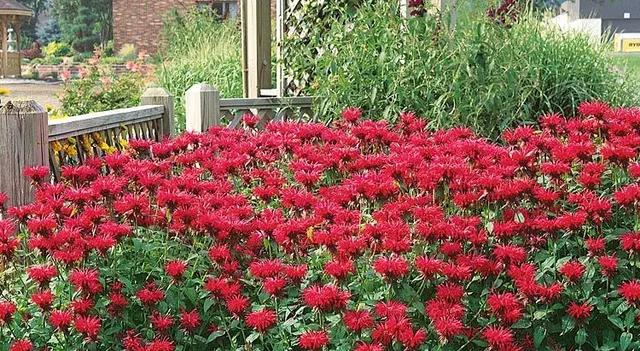
American mint has luxuriant plants, fragrant leaves and branches, bright flowers and long flowering period. It can emit a refreshing aroma. Its aroma can calm the mind, relieve stress, boost spirits, kill bacteria and strengthen the body. It can be placed in pots indoors for viewing, or arranged in flower beds and flower borders.
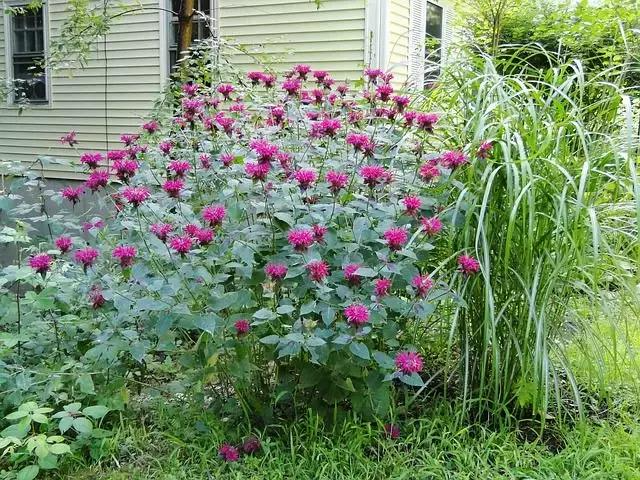
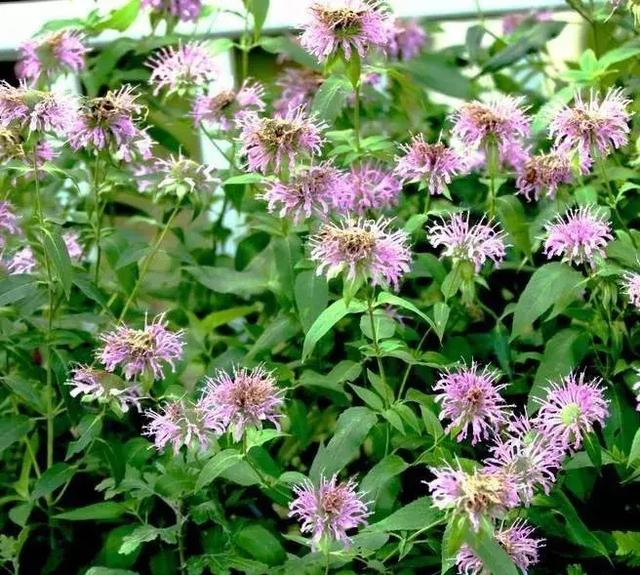
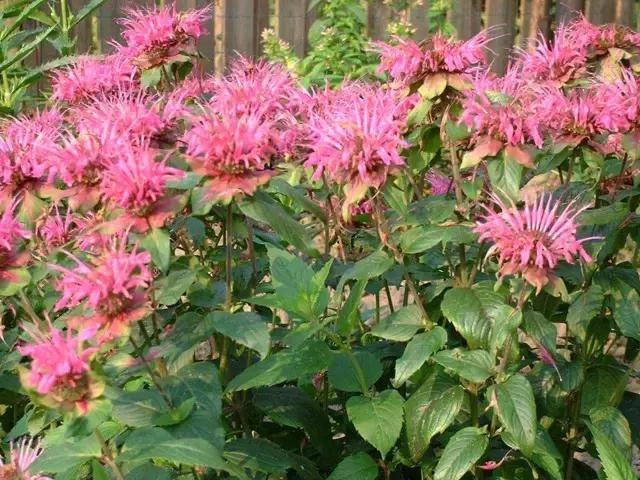
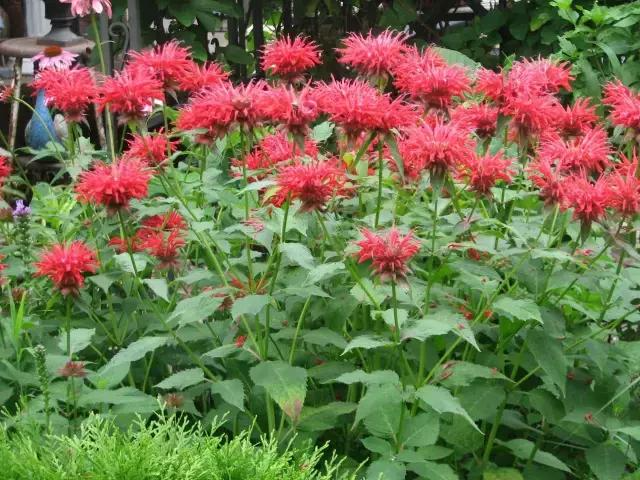
American mint has a rhizome underneath and grows very fast. In order to prevent it from escaping, it is recommended that you plant it in the pot when planting it in the ground.
When it blooms, the flowers are red and the color is very beautiful. This is something that other mints cannot compare to.
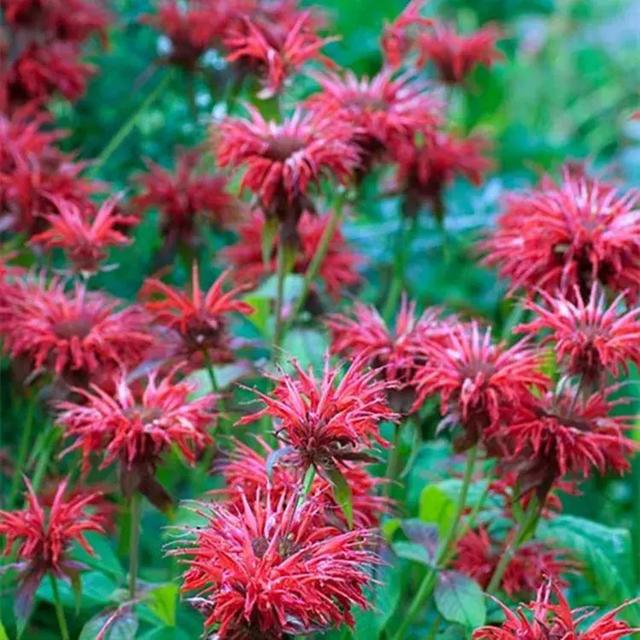
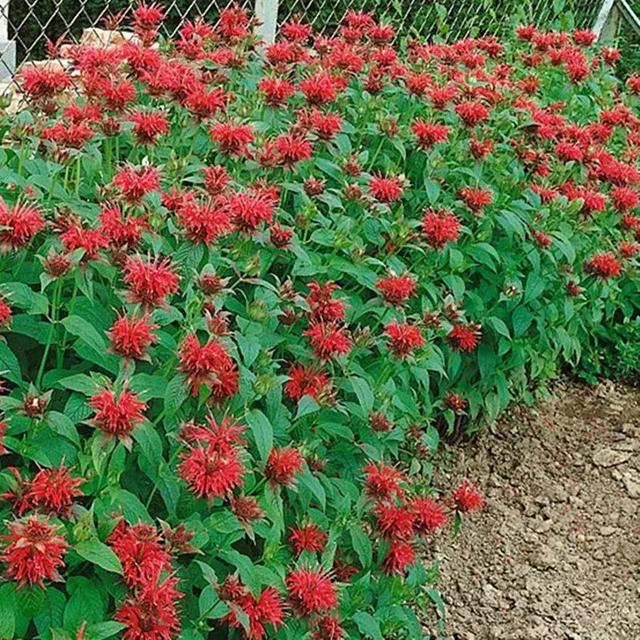
American mint flowers
09
Geum
The avens is a perennial herb. The fibrous roots grow in clusters. The stem is erect, 20-100 cm high, with coarse, stiff hairs or rarely hairless. The basal leaves are large-headed pinnate compound leaves, usually with 2-6 pairs of leaflets, and 10-25 cm long including the petiole.
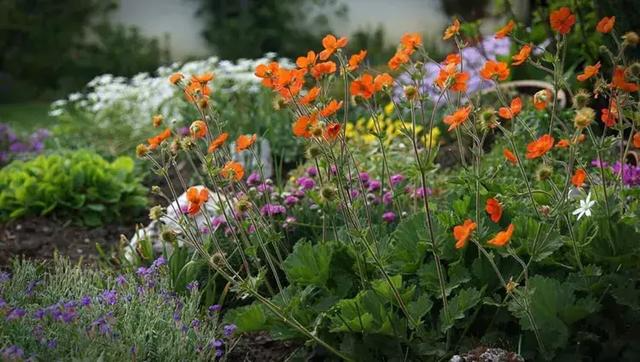
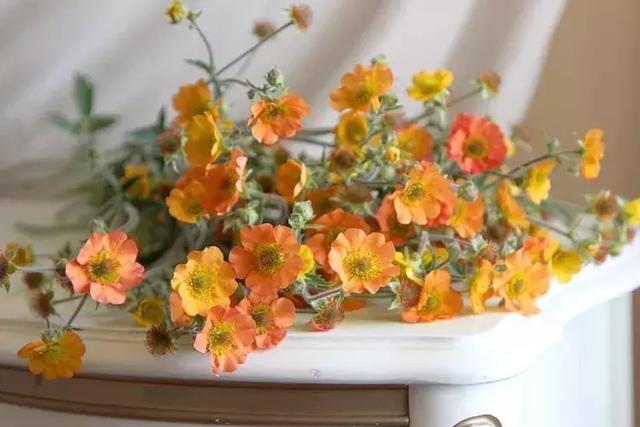
The branches of the water bayberry are spread out, graceful, beautiful and eye-catching. It is a very excellent variety, especially suitable for arrangement in low-lying areas and beside ponds, and can also be used as flower paths and hedges.


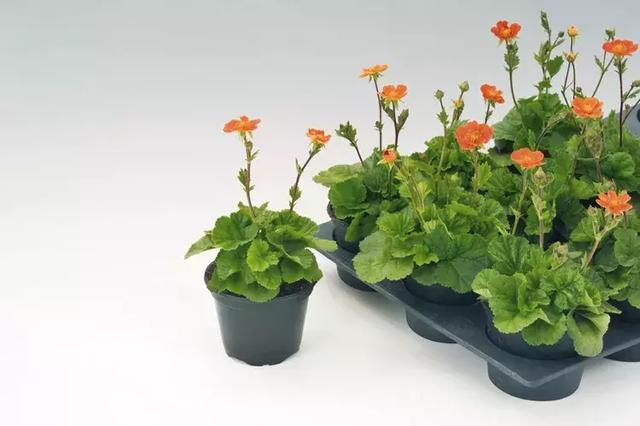
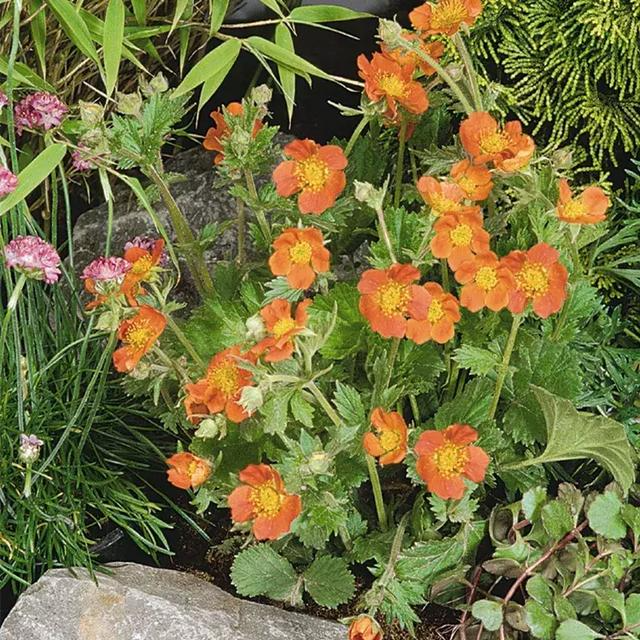
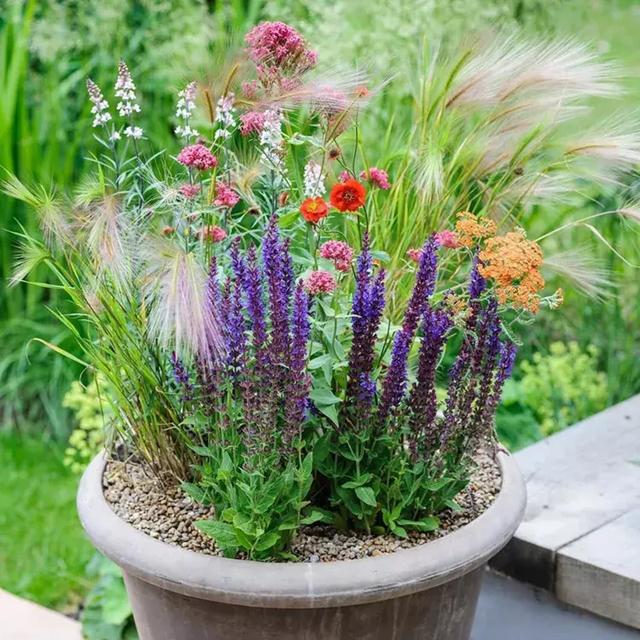
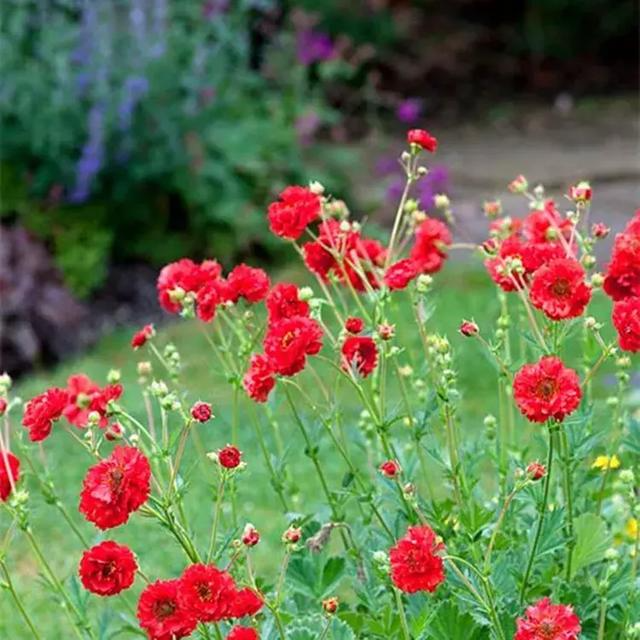
10
Blood red geranium
Blood-red geranium can also grow well in the shade of trees in partial sunlight, and the original red-flowered safflower allows the color to continue, creating a beautiful corner of the garden.
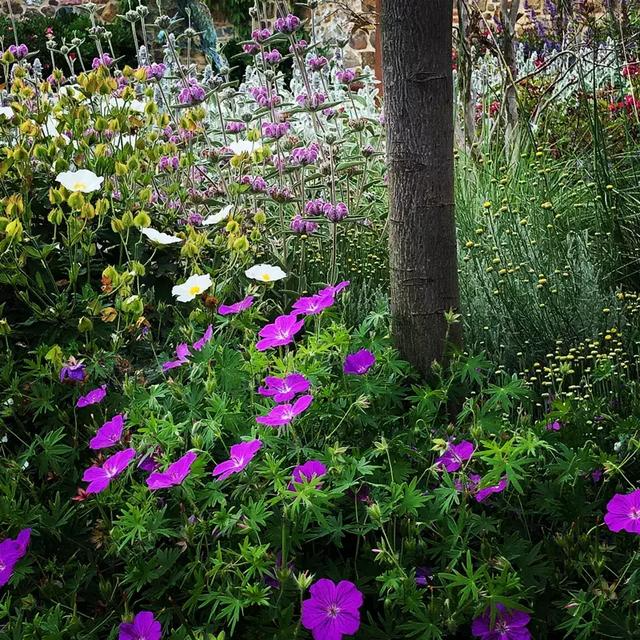
The low-growing blood-red geranium is suitable for creeping along brick and stone paths, and it can create a low-key and elegant atmosphere when paired with sedum plants with red leaves.
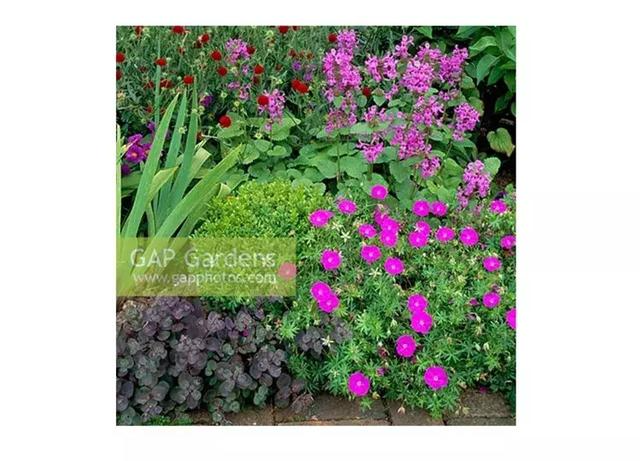
The blood-red geranium grows naturally in a clump and is planted with the soft-haired feather grass beside the gravel path, creating a path full of natural atmosphere.
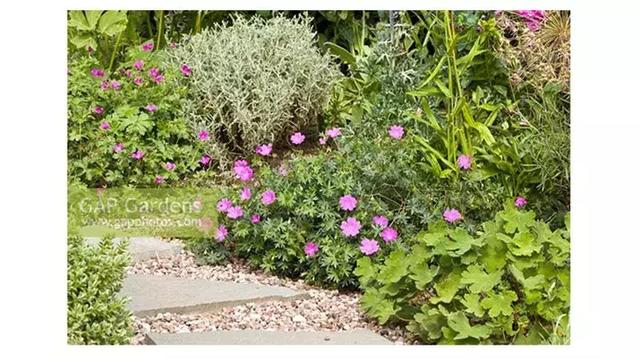
11
Juncus
A perennial root plant I, with hollow leaves, can be planted on the edge of a pool or a flower mirror, and can have good ornamental value.
It is resistant to water and moisture, and has no strict requirements on soil. It is a plant that even novices can grow well.
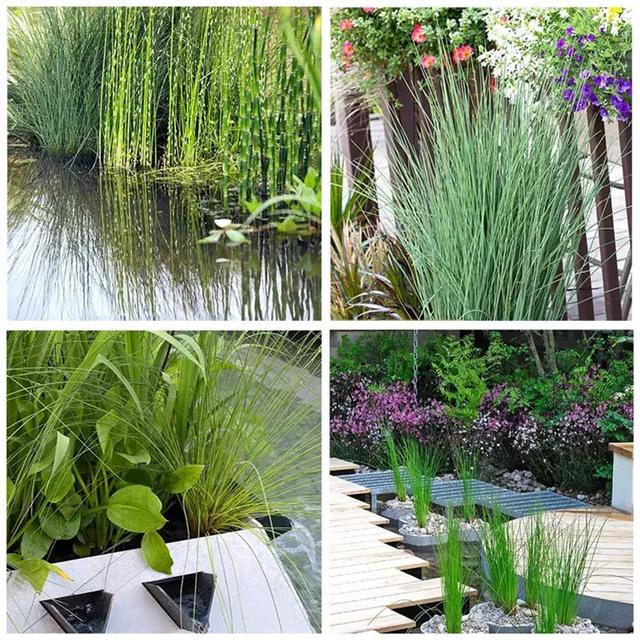
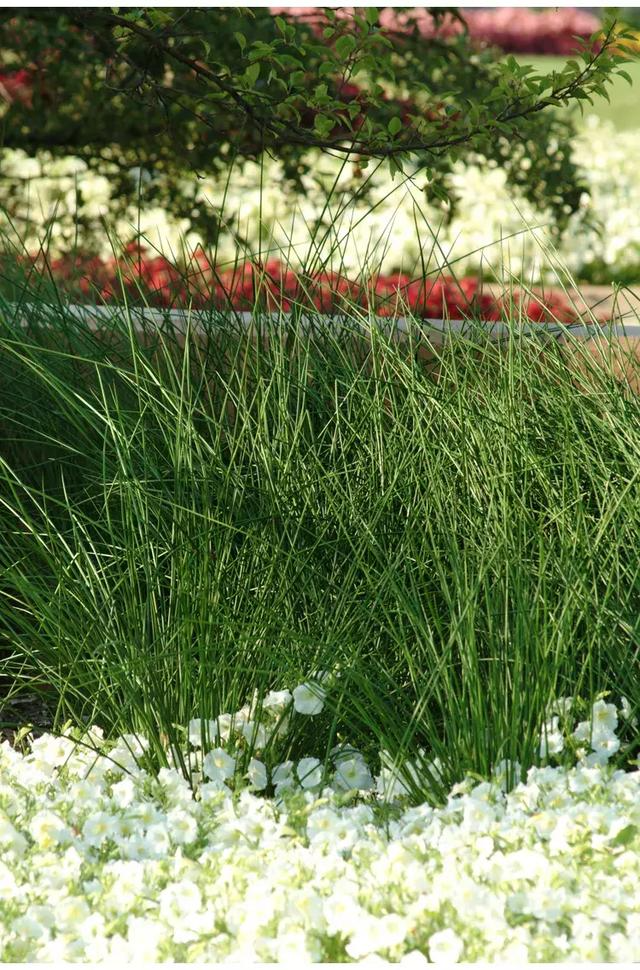
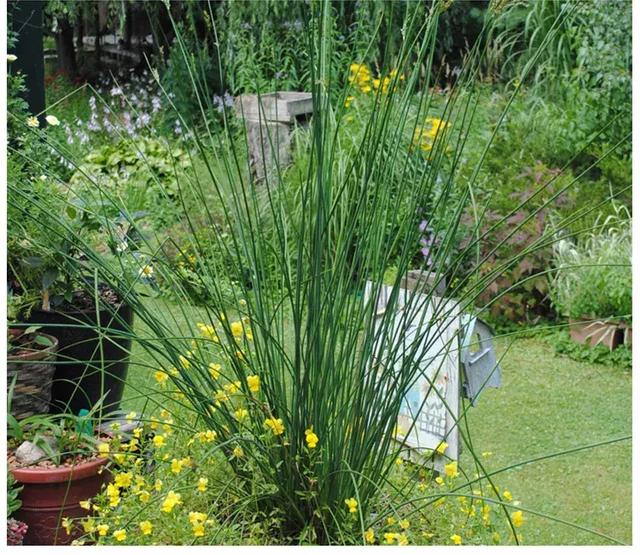
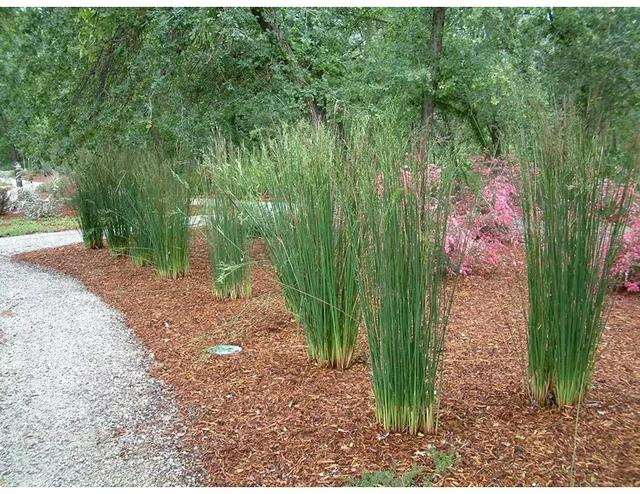
Because of its slender and scattered leaves, rush is also very effective when used in potting arrangements. It can add the finishing touch and avoid the potting arrangement being boring and rigid.
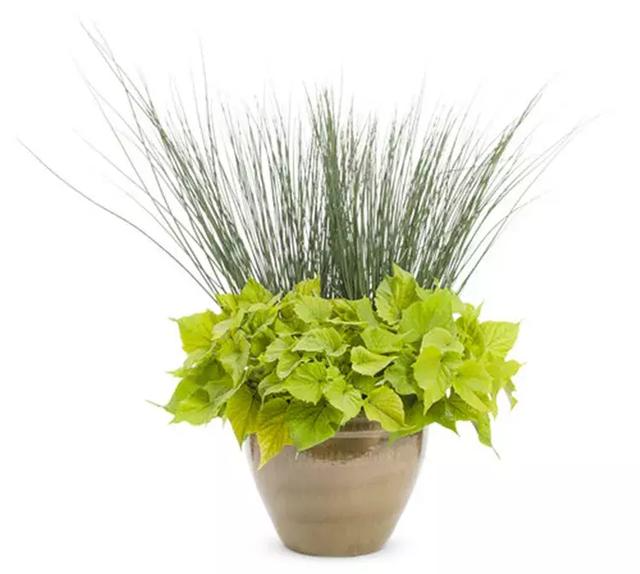
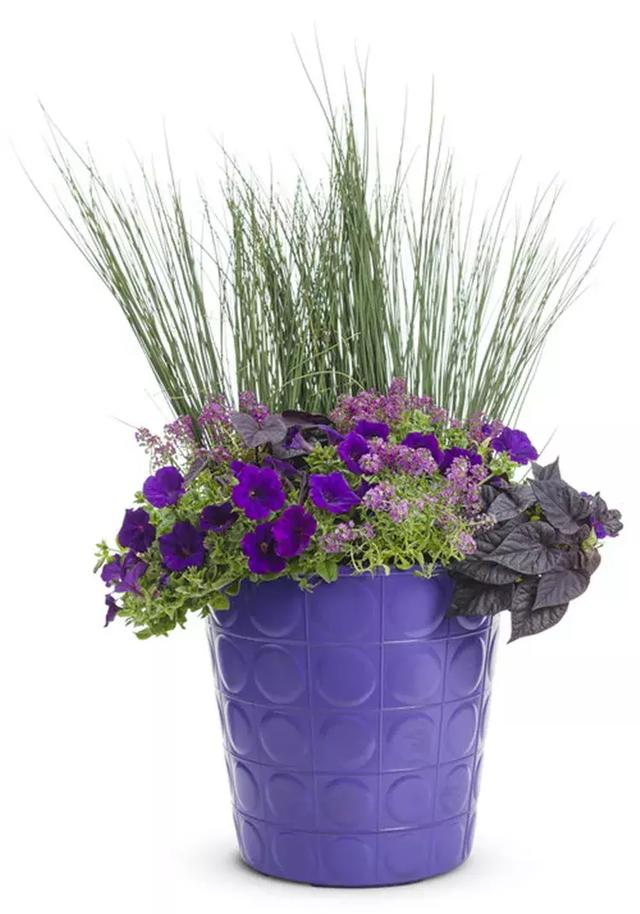
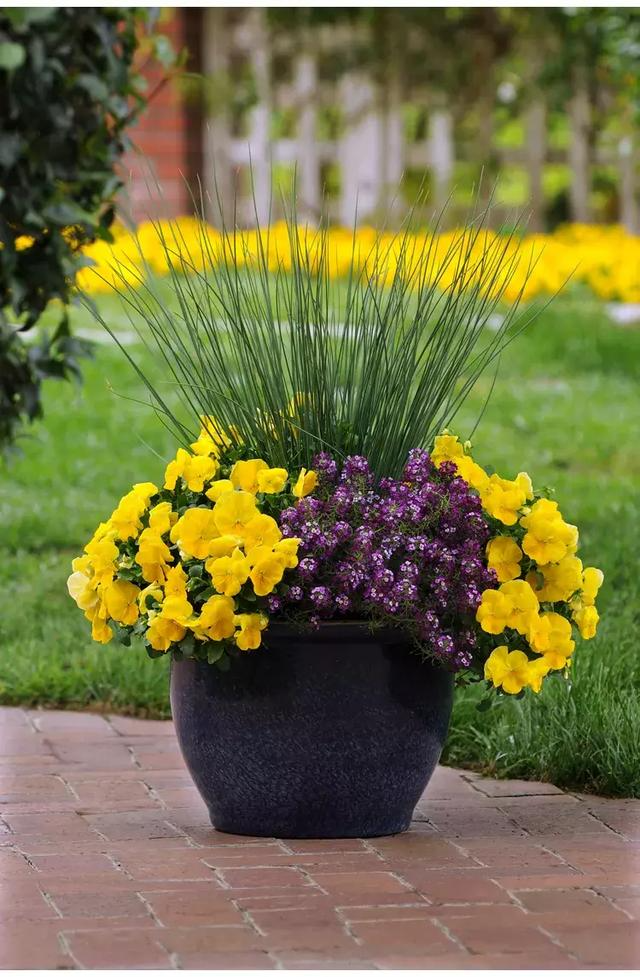
12
Eryngium flatleaf
Eryngium flat-leaved belongs to the Apiaceae family, Eryngium genus. It likes heat resistance very well and is native to Xinjiang. Because the flowers have extremely high ornamental value, they are widely cultivated artificially.
If the flower art world holds an awards ceremony, the best supporting role award must go to Eryngium. It has rich colors, including blue, purple and green, and a unique shape. It stands out among the main flowers and can definitely add wildness to ordinary bouquets. It is an indispensable match.
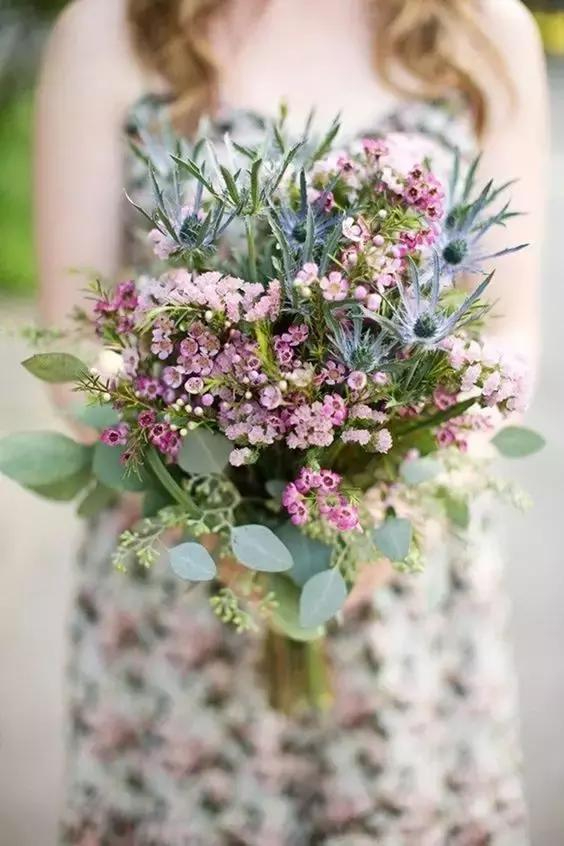
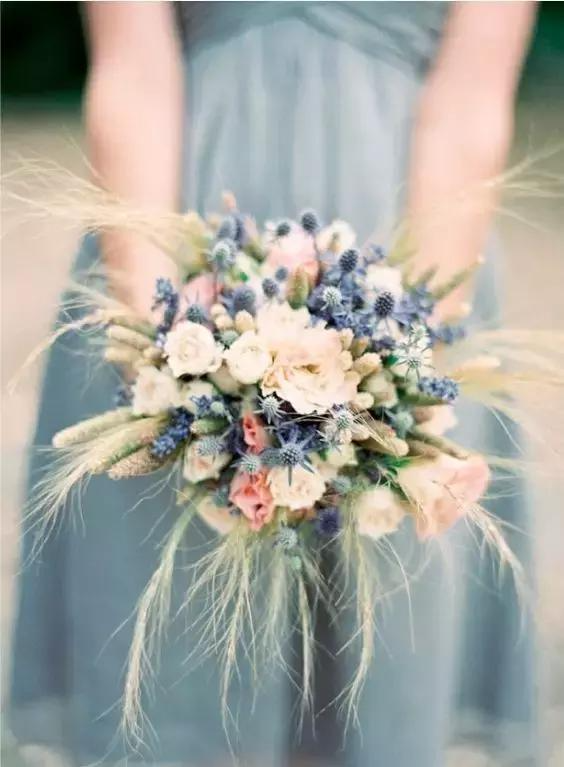
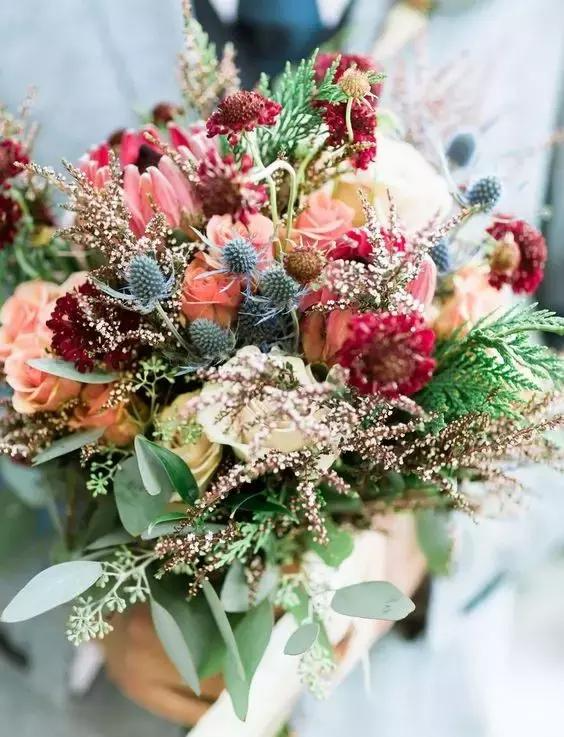
Its metallic blue-purple luster, if removed from the bouquet and allowed to perform a "solo", would reflect a completely different cool tone, exuding an extraordinary elegance.
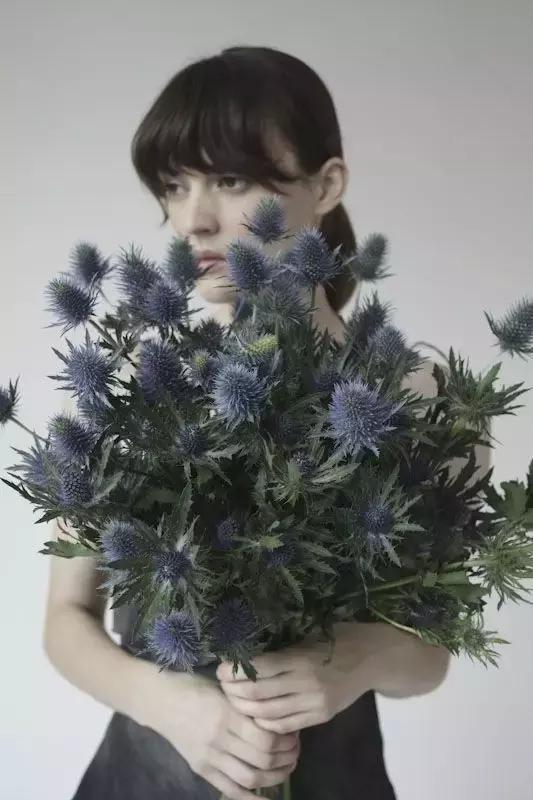
Holding a bunch of eryngium in your hand, you will immediately feel the Nordic style
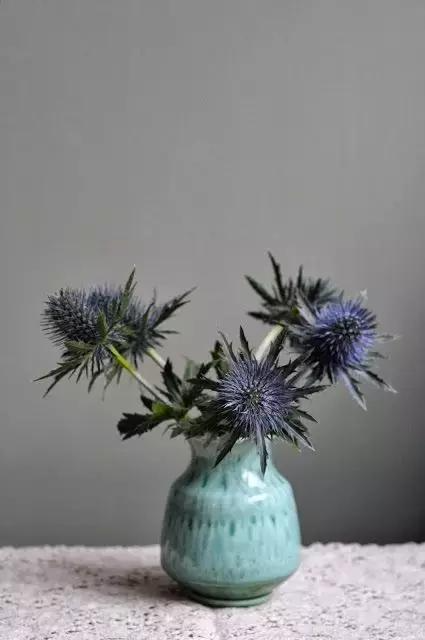
Two or three independent ones, a sense of "domineering president"
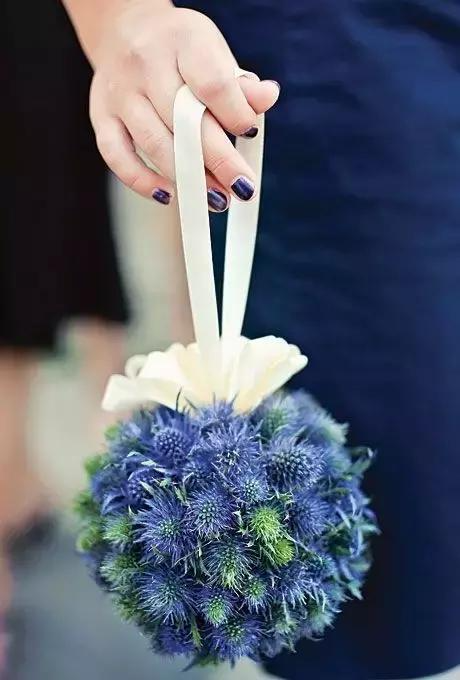
Well, you can also make it into a flower ball

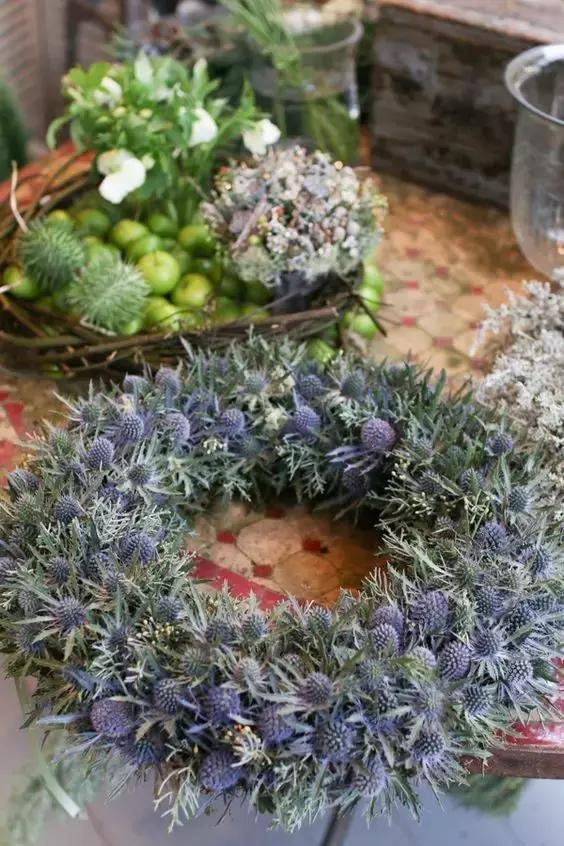

The leaves of Eryngium flat-leavedum are not very attractive, but the flowers are very beautiful and worth planting.
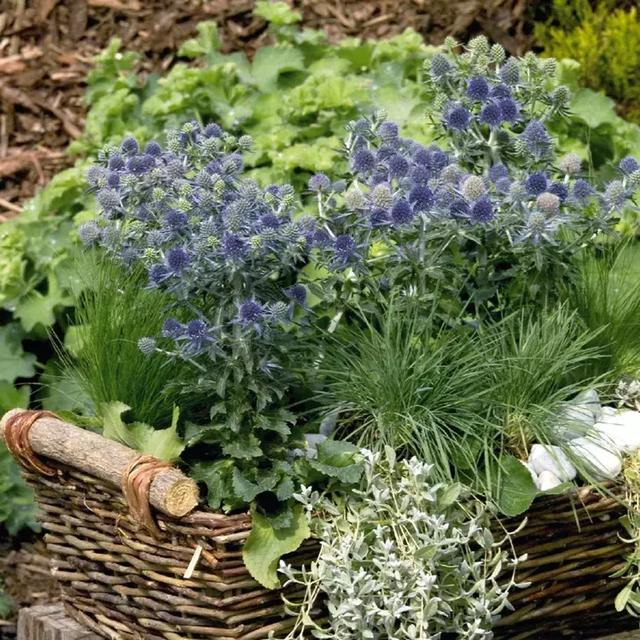
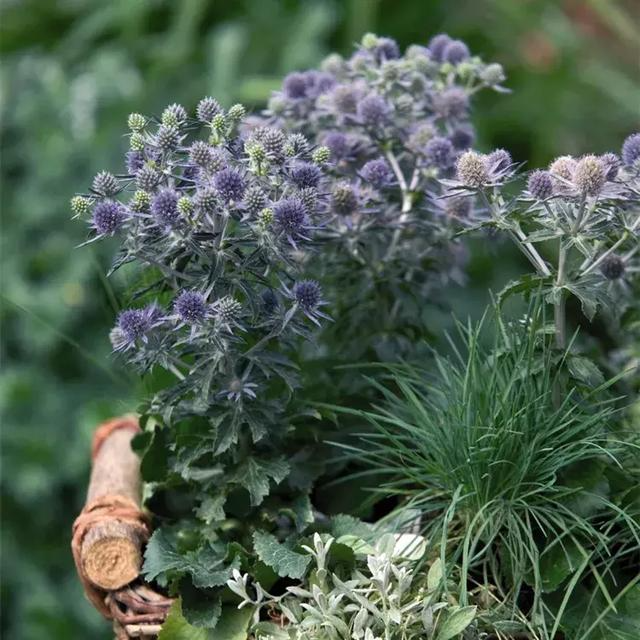

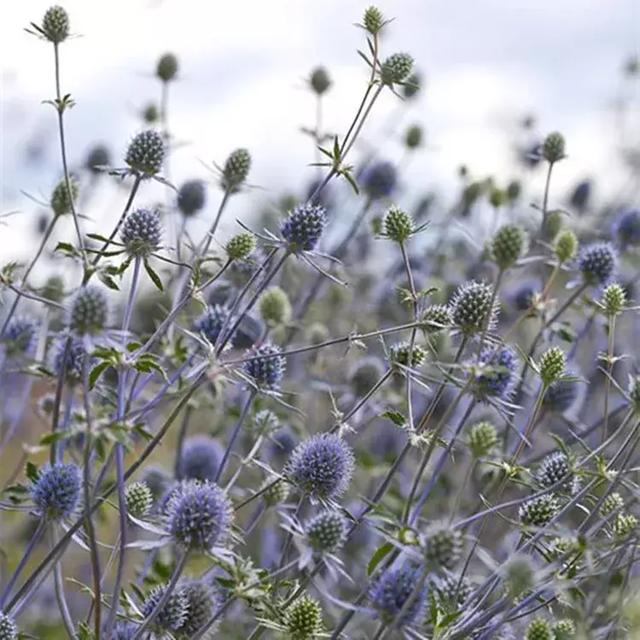
13
Double Shasta Daisy
Perennial flower, 60-70 cm tall, strong and upright, milky white with yellow core, early semi-double and double flowers account for a large proportion, flower diameter 6-7 cm. Used in flower beds and flower borders in all seasons.
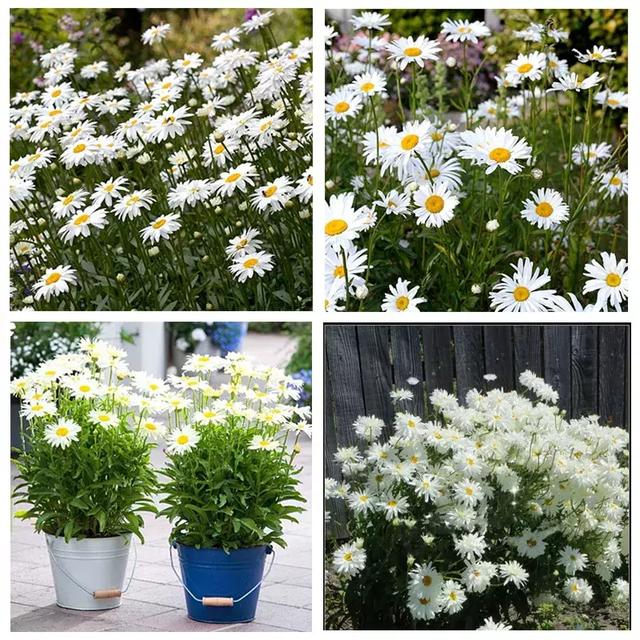
The pure white and elegant daisy can easily create a garden atmosphere. The white color of daisy represents simplicity, nature and beauty.
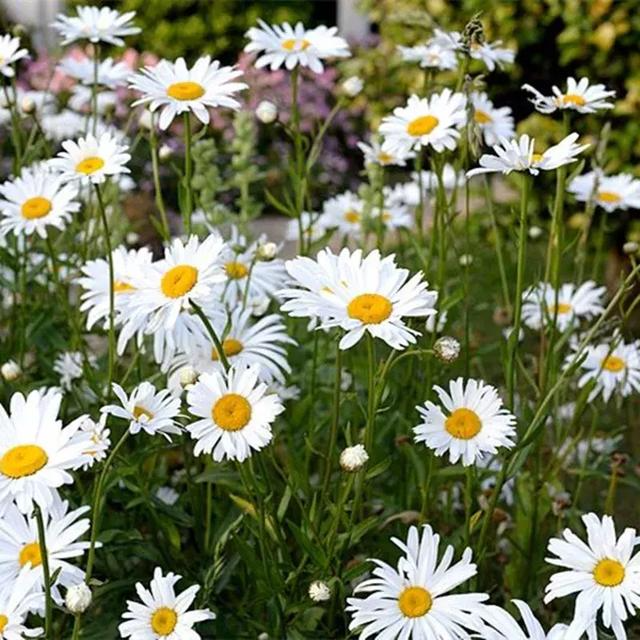
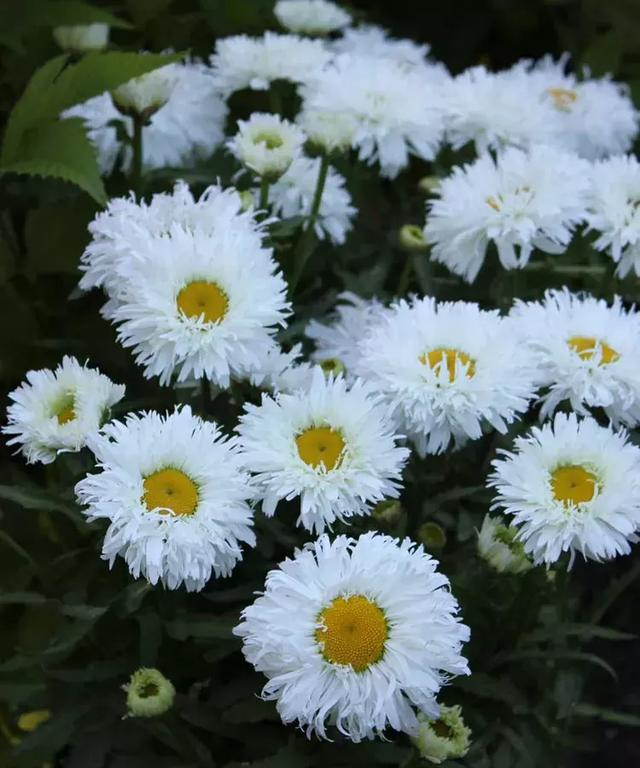
It likes a warm and sunny environment. If you water and fertilize it on time after planting, it will bloom into a super fairy-like shape.
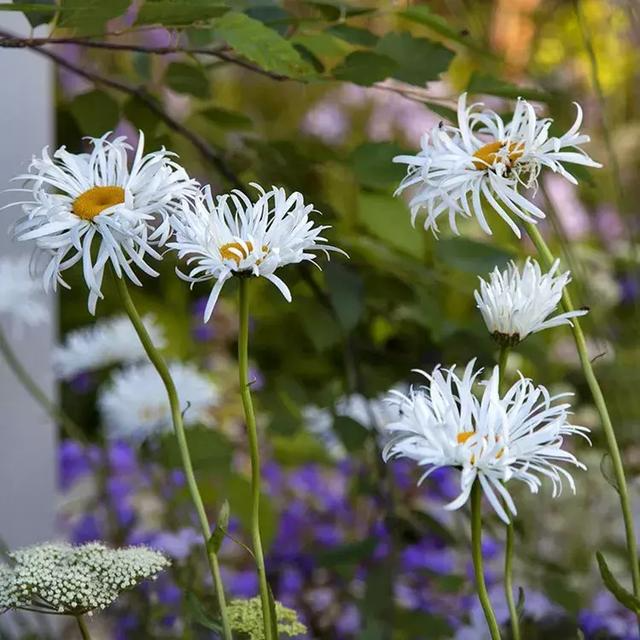

14
Collard
Feather grass has broad green leaves and yellow-green flowers, which can be used for both leaves and flowers. It can be used for gardening, potted plant appreciation and cut flower production.
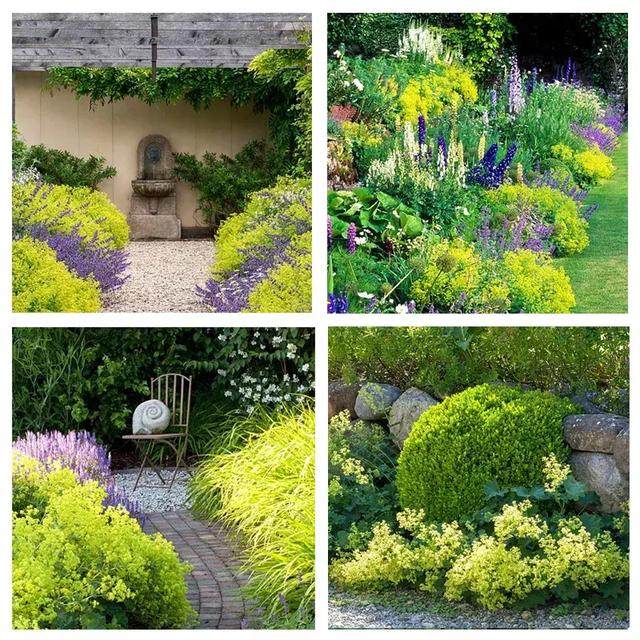
The yellow-green flowers of the feather grass and the purple sage are planted symmetrically on both sides of the gravel path, extending the line of sight to the water view in the distance and extending the sense of space in the garden.
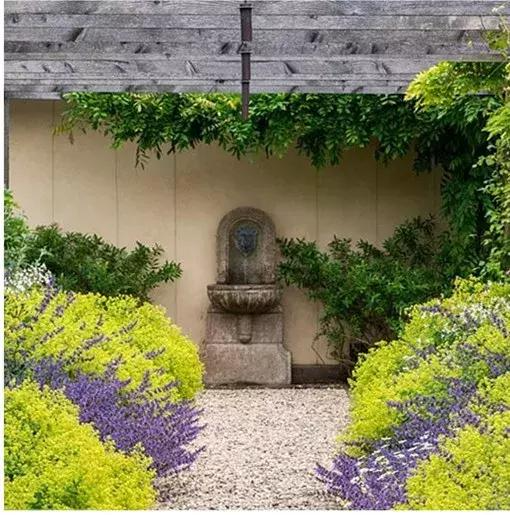
The yellow-green flowers are grown locally, with pink dracaena and New Zealand flax as focal plants, creating a beautiful landscape effect.
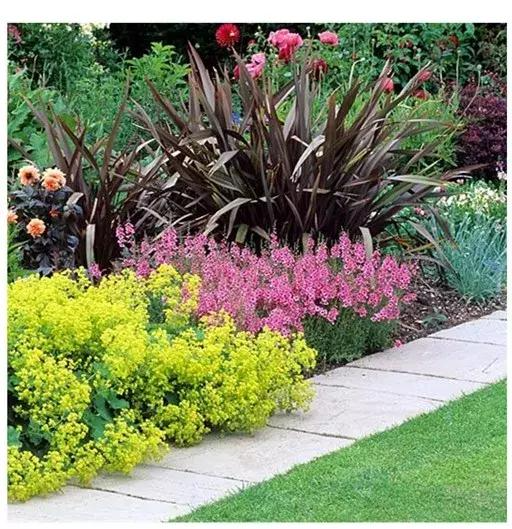

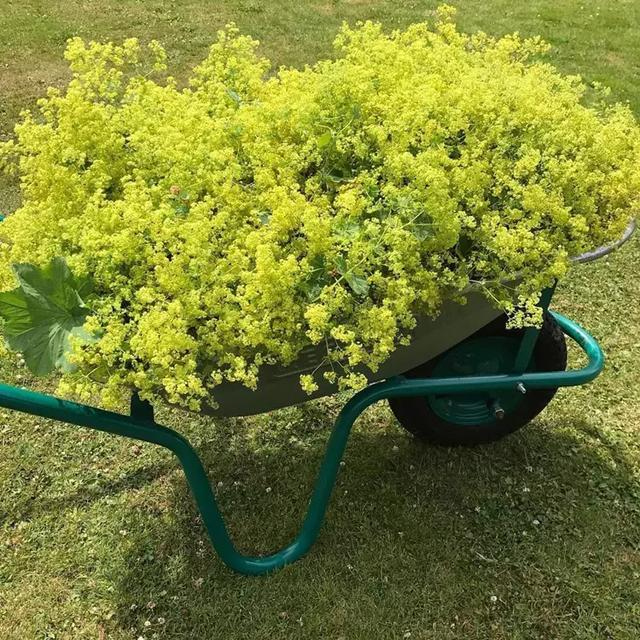
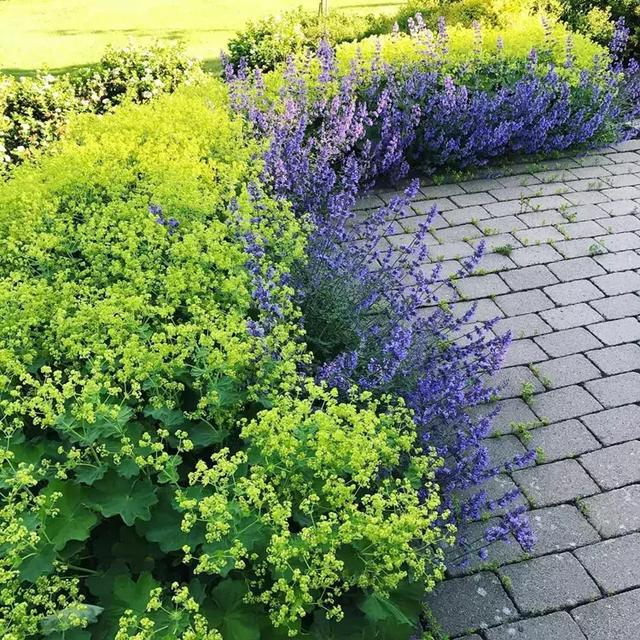
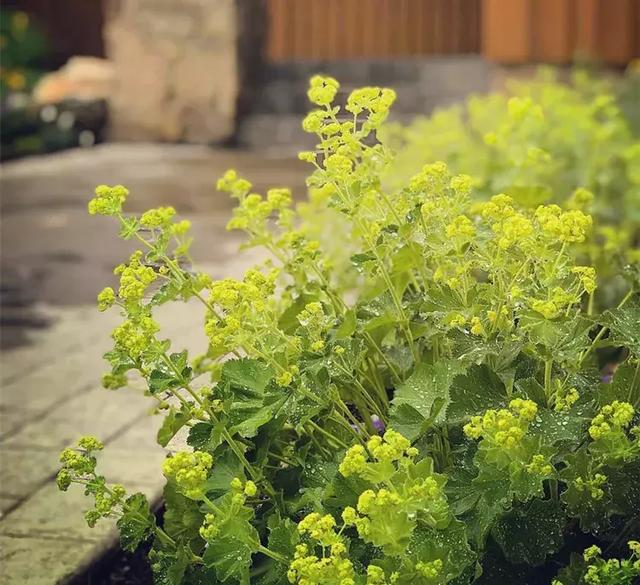
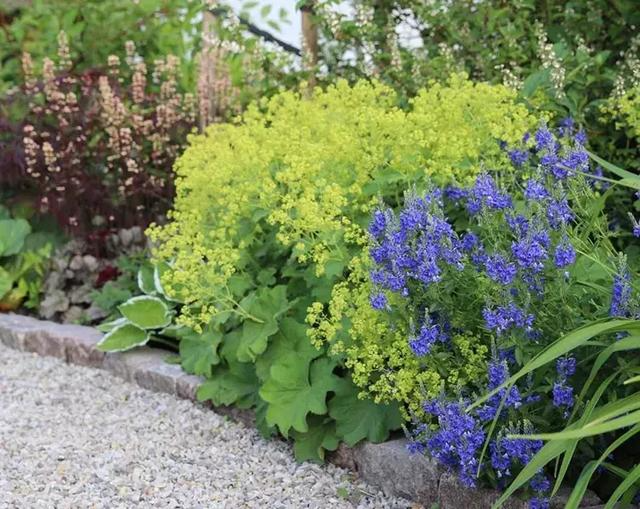
14 perennial plant maintenance tips:
01/Temperature: It has good cold and heat resistance. In summer, pay attention to watering to avoid drought. In very cold places such as the Northeast, the roots need to be covered with 15cm of soil for protection. It can survive the winter without pressure in Jiangsu, Zhejiang, Shanghai and other places.
02/Light: Except in summer, the longer the daylight, the better.
03/Watering: Water when the soil is dry and wet when the soil is wet.
04/Pests and diseases: Almost none, no need to worry.
05/Soil: Any soil is acceptable. For potting, use a 1:1 mixture of peat and garden soil. For ground planting, choose a place with good sunlight.
06/Pots: When planting in pots, you should switch to a two-gallon pot, and as the plant grows, switch to a larger pot. Pots can also produce great results, so you must give it a try.
07/Fertilization: Almost no need, but giving some Huaduoduo No. 1 in early spring can promote growth and reach the size of mature plants as soon as possible. If conditions permit, give Huaduoduo No. 1 once a month to promote growth.